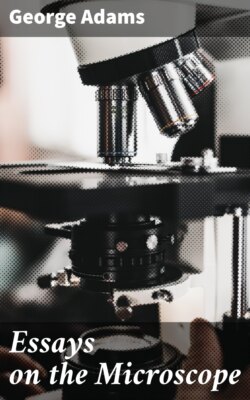Читать книгу Essays on the Microscope - George Comp Adams - Страница 23
На сайте Литреса книга снята с продажи.
TO USE THE LUCERNAL MICROSCOPE IN THE EXAMINATION OF TRANSPARENT OBJECTS.
ОглавлениеThe microscope is to remain as before: the upper part f g r s of the opake stage must be removed, and the stage for transparent objects, represented at Fig. 4, put in its place; the end, Fig. 9 and 10, to be next the lamp.
Place the rough glass in its groove at the end A B, and the objects in the slider-holder at the front of the stage; then transmit as strong a light as you are able on the object, which you will easily do, by raising or lowering the lamp.
The object will be beautifully depicted on the rough glass: it must be regulated to the focus of the magnifier, by turning the pinion a.
The object may be viewed either with or without the guide for the eye; a single observer will see an object to the greatest advantage by using this guide, which is to be adjusted as we have described, page 73. If two or three wish to examine the object at the same time, the guide for the eye must be laid aside.
Take the large lens out of the groove, and receive the image on the rough glass; in this case the guide for the eye is of no use: if the rough glass be taken away, the image of the object may be represented on a paper screen.[29]
